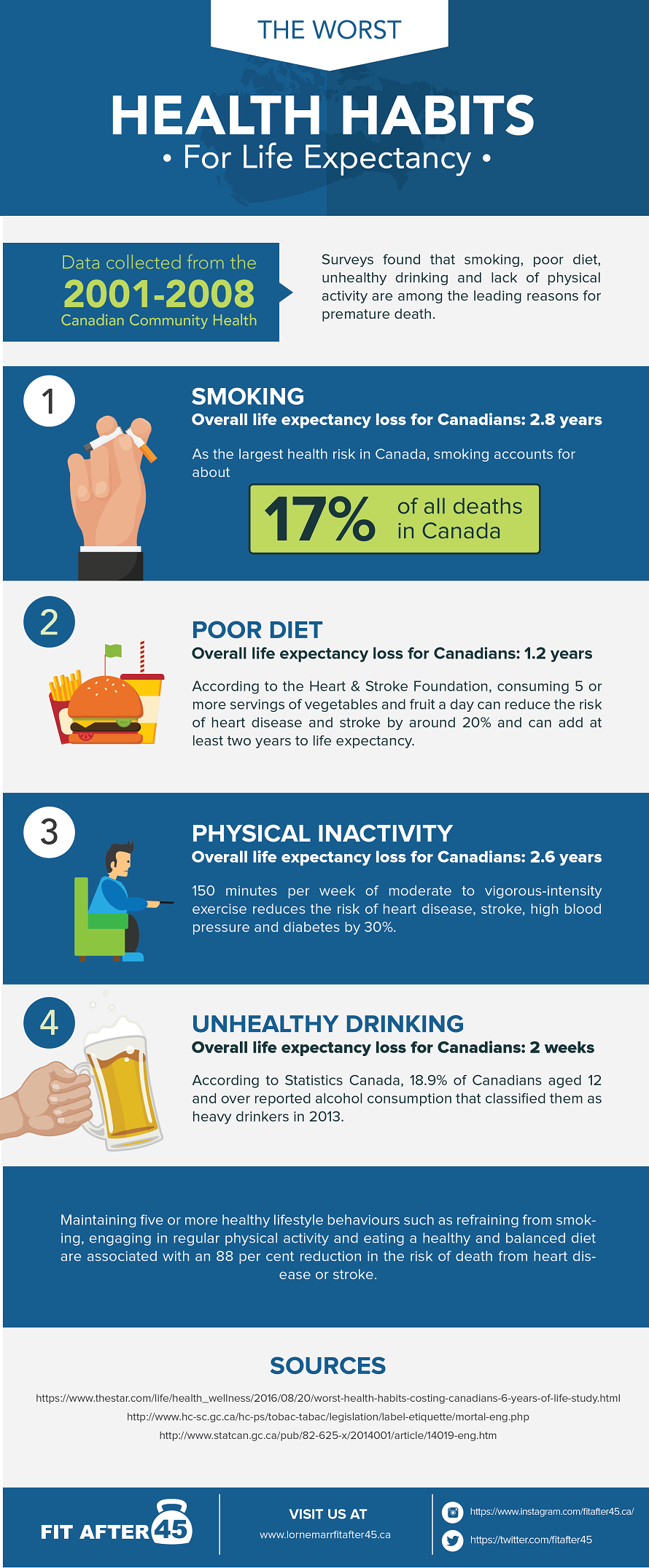86 Unbelievable Facts About Running (Infographic)
Each day, millions of people from all around the world go for a run. Some run marathons, some go out for a jogging session, and some venture into the mountains for an uphill sprint. However, all of these runners have one thing in common; they are all healthy.
It’s no secret that running is one of the healthiest activities that you can take on. From the numerous cardiovascular benefits to the powerful calorie-burning properties, regular running will help you keep your body healthy and in shape for many years to come. Moreover, running is an activity for people of all ages. The youngest marathon finisher was only five years old at the time of the race, and the oldest one was 101.
However, like every other dynamic activity, running requires preparation, adequate equipment, and caution. While running itself has no downsides, running-related injuries are more common than you may think. In fact, 65% of all runners suffer an injury within their first year of running.
So, as quality equipment is key, make sure you buy a pair of legitimate running shoes – Nike is an outstanding brand offering just that! Warm up properly, play some music over your headphones, and you are ready for a run. But before you do all that, make sure you read the other running facts in the infographic below; you will be motivated even more.

Perhaps the struggle on the path the fitness is intimidation. Namely, the intimidation we feel when we’re at the gym. It’s easy to feel inferior or even stupid when you’re surrounded by people who are already in great shape. “How do I use this machine?” “I’ll never be able to lift that much!” “I’ll never look like that.” These are just a couple of thoughts that plague those who are trying to get started on their fitness journey.
Below is a wonderful graphic from Aaptiv. Aaptiv is an audio fitness app. Having a personal trainer in your ear while working out could be a great way to stay motivated for sure! If you’re not ready for that however just check out some of the information below. It’s amazing that 80% of adult Americans are not exercising enough!
I love the 2nd point about making sure you have a plan before showing up. It’s easy to get confused and distracted if going to the gym is a new routine for you. Showing up knowing what you’re going to work on ahead of time is key. You might have a goal of simply running the treadmill or 5-6 exercises to perform. Whatever you choose, just have goals before going in and leave once they are accomplished. It will help alleviate any pressure to do more, and you’ll leave feeling great every time!
I also think #4 isn’t talked about enough. Ask someone for help! The gym and fitness scene is very different than it was years ago. The mindset of most people in the gym is one of inclusion. They are happy that you are there and happy to help if you need it. I understand this wasn’t always the case. Gym were full of people who didn’t want to deal with people just starting out. Those days are over. While I’m sure some jerks still exist is a rare thing. Most people are happy to help you out 🙂 If you’re still nervous about talking to another member, find a trainer!
The graphic answers some great questions that everyone deals with. This, I think, might actually be the key. You are not alone. Many people go through the same internal struggles. Give the graphic a read, I’m sure it will address the challenges you’re facing and hopefully motivate you to get fit!
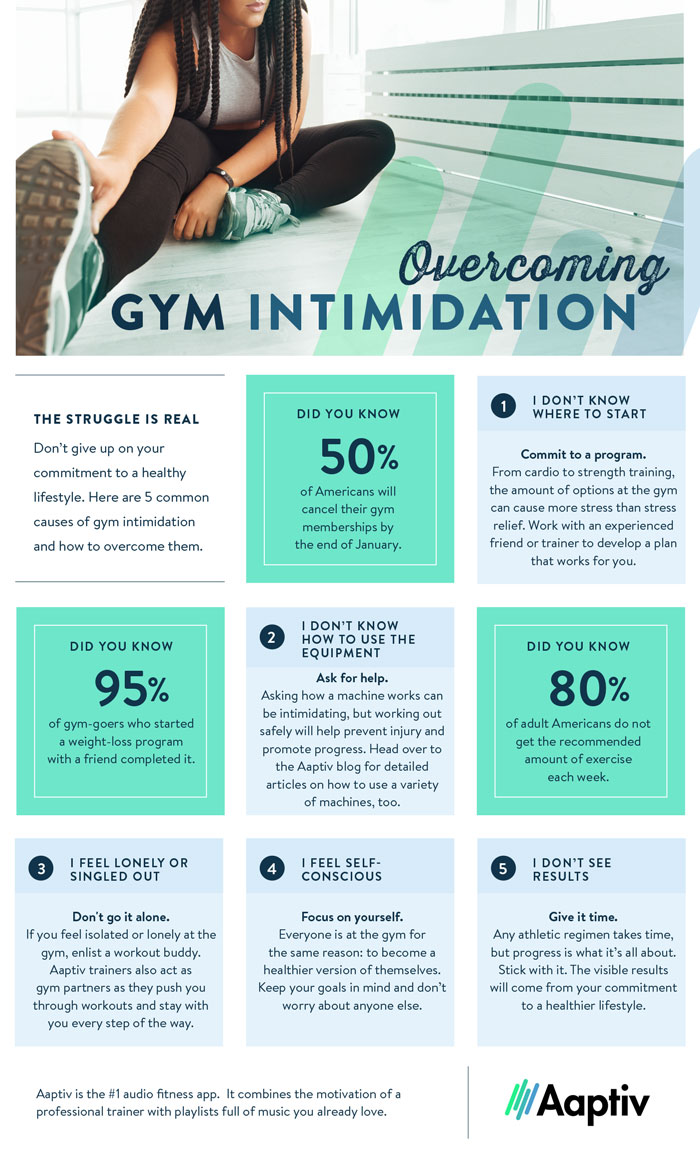
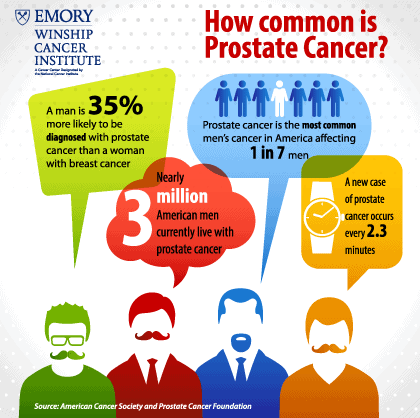
Does what you eat make you more likely to develop prostate cancer? If you have prostate cancer, are there foods that help fight it off and keep it from coming back? November is Prostate Cancer Awareness Month, a good time to focus on preventing one of the most common types of cancer in men around the world. Experts estimate that in the next 10 years, prostate cancer will be even more common than lung cancer. Early prostate cancer usually has no symptoms, so regular screening is important. Here are some things you can do to assess and reduce your risk.
Are You at Risk?
Men with a family history of prostate cancer are more likely to develop the disease. African American men are 1.6 times more likely than Caucasians to be diagnosed. Asian-American men and men who are Hispanic or Latino are less likely to develop prostate cancer.
The World Cancer Research Fund International conducted extensive studies on risk factors. They studied how diet, weight, and activity level affected risk. Here’s what they found.
- Strong evidence exists that men who are overweight or obese are more likely to develop prostate cancer.
- There is strong evidence that developmental factors contribute to increased risk. For example, the taller a man is, the higher his risk of developing prostate cancer.
- Beta-carotene was thought to reduce risk, but studies show that consuming large amounts of it has no effect on risk.
- Age is a factor. Men under 40 rarely develop prostate cancer, but the risk rises gradually after men reach 50.
- Geography matters. Men in North America, Europe, Australia, and the Caribbean islands are more likely to develop prostate cancer than men in Asia, Africa, and Central and South America are. Lifestyle differences such as a diet low in processed foods likely account for the difference.
- Diet plays a role. Men who eat a lot of red meat and high-fat dairy have a higher risk. These men also typically eat fewer fruits, vegetables, and whole grains.
Foods That Might Cause Prostate Cancer
Foods that are packaged and processed are often high in fat and calories. If you get it from a drive-through, it probably isn’t going to help you maintain a healthy body weight. Those foods aren’t just bad for your waistline; they might make you more likely to develop prostate cancer.
The Fred Hutchinson Cancer Research Center in Seattle studied men between the ages of 35 and 74. They found men who ate French fries, fried meats, or fried doughnuts once a week or more had a 30 to 37 percent higher risk of developing prostate cancer. Men with the lowest risk ate fried foods once a month or less. Saturated fats have been linked with heart disease, so avoiding them kills two birds with one stone.
Red meat contains heterocyclic amines (HCAs), carcinogens linked to several cancers. Stay away from processed beef, pork, lunch-meat, hot dogs, and sausage.
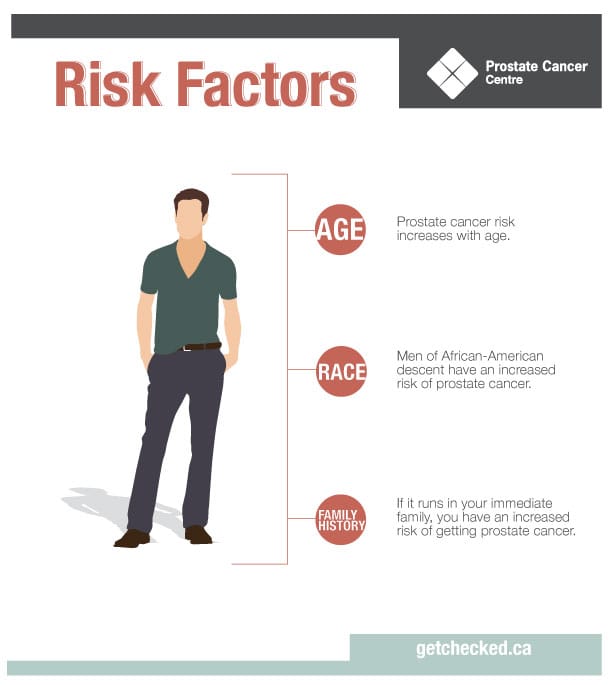
Prostate Protection Diet
Even if you only have one or two risk factors, healthy nutrition can help you prevent prostate cancer. Being overweight or obese is one of the biggest contributing factors to developing prostate cancer. Eating right and staying physically active helps keep your body mass index within a healthy range. Replace unhealthy foods with these options.
Nuts – Selenium is good for prostate health, and Brazil nuts contain 10 times your recommended daily allowance. Nuts also contain high levels of zinc, another mineral important to maintaining a healthy prostate. Nuts are high in protein, magnesium, and thiamin, all of which have health benefits.
Broccoli – Broccoli fights cancer. It is rich in sulforaphane, which helps the body detoxify itself and eliminates outside elements that may cause cancer. It also contains indole-3-carbinol, which suppresses cancer cell growth and lowers the production of protein specific antigen. One trial found men who eat broccoli more than once a week had a 45 percent less chance of developing advanced prostate cancer.
Cayenne – This bright red chili pepper contains capsaicin, which reduces pain and kills cancer cells. Capsaicin attacks cancer cells and causes them to self-destruct. It also fights atherosclerosis, prevents ulcers, and helps reduce your risk of diabetes.
Green tea – Men who drink at least three cups of green tea a day have a lowered risk of prostate cancer.
Pomegranates – Pomegranate extract slows prostate cancer cell reproduction and stops blood vessels from nourishing prostate tumors. Pomegranate juice is a great way to get it in.
Fish – Omega-3 fatty acids in fish both prevent prostate cancer and slow prostate tumor development. Eating fish can reduce your risk even if you’re genetically predisposed.
Fight Prostate Cancer and Make Money
It can be hard to eat healthy with today’s busy lifestyles. You can’t always find food that’s good for you. Vending machines offer convenient snacking, but they’re often full of the worst foods. Consider installing a Naturals2Go healthy vending machine at your office. Operators select inventory based on what their customers want and their own nutritional needs.
Offer nuts, bean chips, and all-natural fruit snacks in place of cookies and candy bars. Keep healthy options handy for yourself and those closest to you, and make money doing it. Contact us today to find out more about our machines.
NYC ENT Releases Infographic 5 Things You Need to Know About Your Sinuses

The Science behind a Perfect Night’s Sleep [Infographic]
It’s common knowledge today that your lifestyle, what you eat and what you drink play a big part in your sleep pattern and quality of sleep, and while people know this and understand the concept of holistic well-being to some degree, most people don’t know exactly what factors influence their sleep and to what extent.
Normally it’s only when we aren’t sleeping well that we realise just how important a good night’s sleep is. Training regularly and eating well are extremely important to well-being but even a few nights of poor sleep can lead to daytime tiredness, lack of focus and concentration.
But getting a consistent amount of sleep every night is a challenge at the best of times, thankfully scientists have been concerned with sleep research for many years and the tips offered in the below infographic are based on years of research aimed at improving sleep quality.
But before we consider how to get a good night’s sleep, it’s important to understand what a good night's sleep is. As described by Dr. Mehmet Oz, MD these are the most important factors when deciding if we are sleeping well or not:
- Sleep latency – the time it takes to fall asleep
- Sleep stages 1 & 2 – getting enough stage 2 sleep, sleep that rests the parts of your brain that you use during the day
- Sleep stages 3 & 4 – these decline with age but are the restorative stages.
While it can be difficult to monitor these different stages effectively, overall if you’re waking up feeling tired and are tired throughout most of the day then you probably aren’t sleeping through all of the above stages, and it’s likely that your sleep quality can be improved.
For more information about the science behind a perfect night’s sleep check out the following infographic created by De Vere:
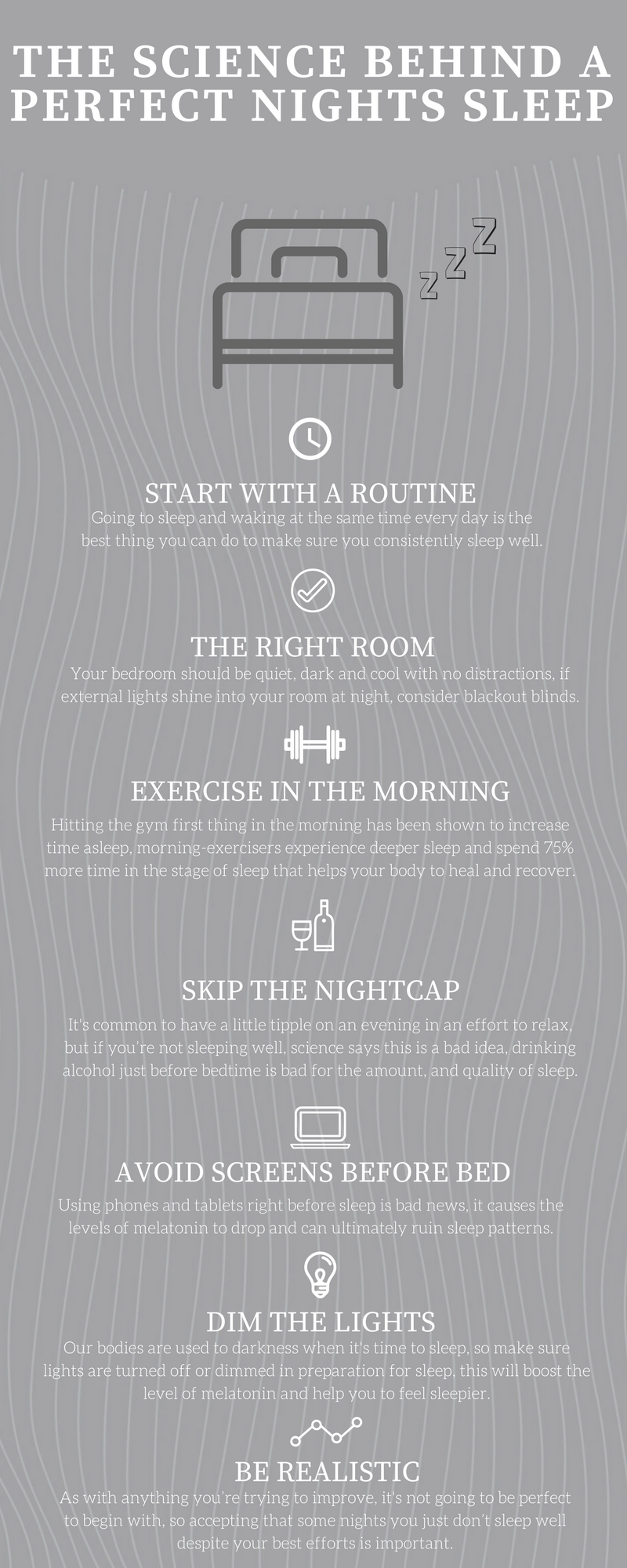
8 Vitamin-packed Foods to include in your Diet for Beautiful Skin
Do you love to have healthy, glowing, beautiful skin?
Well, who doesn’t?
But, the truth is, only people who take very good care of their skin manage to impress others (with their skin). Factors like nutrition, pollution, and stress play an important role in the well-being of the skin of a person.
Even aging does. Did you know that natural aging process for human beings begins in their early 30’s itself? As you grow older, your diet and other external factors will have a big say on the appearance of your skin as well as your physiological functioning.
If you desire to have beautiful skin, then you need to motivate yourself to have nutritious food and exercise every day. Lack of nutrition, in particular, can lead to skin diseases like acne, wrinkles, rosacea, and eczema besides many others. But don’t worry, face creams and masks can help to some extent.
Our body needs vitamins, minerals, proteins, and good fats to function properly. Among these, vitamins are considered the very basic essentials of a healthy body and skin. They help protect the skin from bacteria and also boost the regeneration process. In the rest of the post, you will discover a list of vitamin-rich foods that will help you fix your skin.
- Cabbage
Cabbage is one of those vegetables that is abundantly rich in Vitamin B6. It also contains adequate quantities of manganese, folate, collagen, and fiber – all of which are very important for the skin. Additionally, cabbage also consists of calcium which is essential for bone strength, and potassium which helps controls blood pressure.
What’s more, cabbage is also a powerhouse of antioxidants and vitamin K which help improve skin elasticity.
- Red bell pepper
Your skin needs plenty of vitamin C on a daily basis and one of the best ways to obtain that is to include red bell pepper in your diet. Having adequate quantities of vitamin C helps regulate moisture in the skin and prevents wrinkles as well.
- Avocado
Avocado is known to be a powerful source of vitamin C, vitamin K, vitamin E, Vitamin B6, potassium, folate, and folic acid. Including avocado in your diet can help cure dry skin problem and prevent the breakage of the skin. Vitamin E is known to protect the skin from the sun’s harmful rays. What’s more, avocado also provides the required antioxidants and vitamin C to your skin to help improve its firmness so that you look younger than your normal age.
- Pomegranate
People don’t call pomegranate the “fruit of Gods” without reason. It is one of the best sources of antioxidants among all foods – in fact, it has higher antioxidant content than green tea and wine itself.
The vitamin C present in pomegranates can help your skin look radiant and look younger. As for the health, this fruit is believed to help minimize the risk of cancer.
- Papaya
Papaya is a natural source of iron, vitamin C, and vitamin E. Having enough vitamin E in your body helps keep your skin moisturized, and look soft and smooth. It also prevents the formation of dark spots and stretch marks, which are common among ladies. Studies say that one fresh papaya can supplement 17% of your daily vitamin E requirement.
- Lemons and Oranges
No prizes for guessing, lemon and oranges are the go-to fruits for everyone who is looking to get vitamin C in his or her body naturally. In fact, having more vitamin C also helps boost collagen, which plays a major role in the appearance of your skin. People who take collagen regularly are safe from wrinkles and many age-related skin problems.
- Mushrooms
Including mushrooms in your diet is a good idea because they are loaded with vitamin B2 and Riboflavin. In particular, vitamin B2 is said to be water-soluble in nature and helps safeguard the cells from regenerative damages. Lack of vitamin B2 can cause wrinkles and other health problems like migraines, cracks, and sore throat. What’s more, mushrooms also contain collagen which is believed to improving the elasticity of the skin.
- Kale
Kale is rich in several important vitamins for the skin. It has vitamin A which helps repair the tissues during radical damage. It has vitamin K which is known to prevent dark eye circles and pigmentation problems. Most importantly, it also has vitamin C which is a powerful antioxidant. On the whole, you need kale to get a radiant skin that is free from blemishes and abrasions.
Also, taking kale on a daily basis helps boost cell growth and even prevents dryness.
Conclusion
The foods covered in this post are loaded with the most important vitamins that prevent everything from dryness to acne to age-related problems. What’s even better is that they are also delicious and can be eaten raw or half-cooked. If you have a great cook at your home, then try tossing these foods to make a tasty, health-rich recipe and have a fun way of protecting your skin.
To learn more about the types of vitamins and their benefits, please take a look at this Infographic

Breast Cancer Awareness Month - Knowing It Exists Is Not enough
Did you know that October is Breast Cancer Awareness month?
We all can work with our doctors to aid in increased awareness and early detection both for ourselves and for those around us. This disease can effect anyone. Even men.
Check out this infographic for more information and help support the cause by sharing this post and the graphic! Knowing it Exists is not enough.
This month I'm teaming up with Bankers Healthcare Group, a company whose focus is on providing physician loans to medical professionals, to bring awareness and urgency to early detection of breast cancer.
 October is Breast Cancer Awareness month.
October is Breast Cancer Awareness month.
We all can work with our doctors to aid in increased awareness and early detection both for ourselves and for those around us. This disease can effect anyone. Even men.
Check out this infographic for more information








